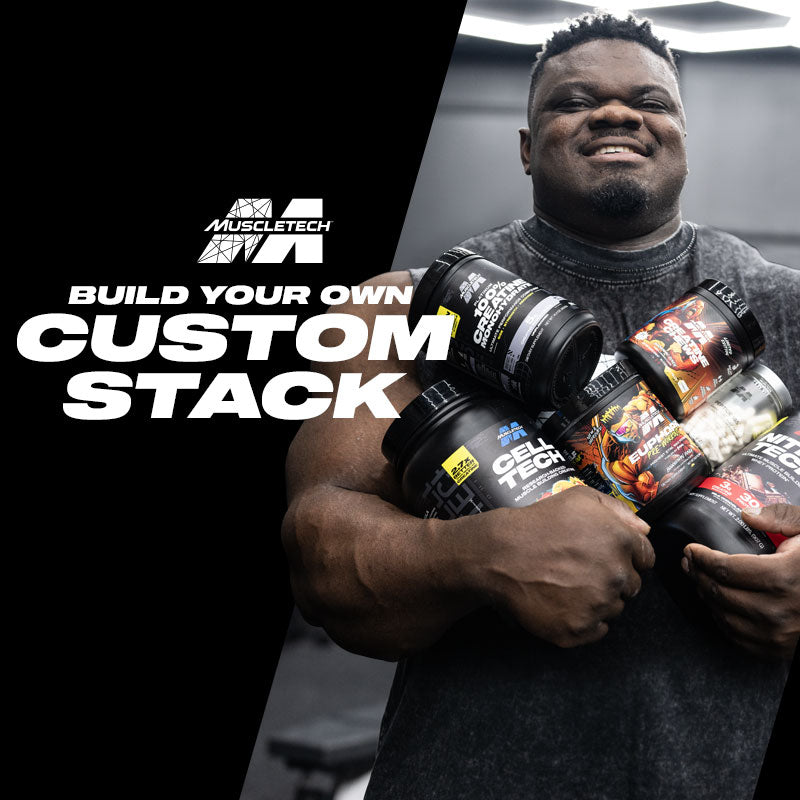There’s still controversy over whether lifters should only stick to big heavy compound movements when it comes to reaching their training goals or incorporate more old school bodybuilding isolation exercises. With the rise of barbell dominated weight lifting, many of the staple isolation machines and exercises of years past have fallen by the wayside. But are they still useful? We’ve got the lowdown on both types of lifts, and the right mix for maximum benefits.
COMPARING COMPOUND AND ISOLATION MOVEMENTS
Compound and isolation (iso) training are the same in that they are both styles of resistance training. Both load the muscles with added resistance in order to increase strength, develop anaerobic endurance and, of course, to enhance and increase muscle size. But the similarities more or less stop there. Compound and iso training have some very key differences.
The most notable distinction between compound and iso lifts is that iso is a single-joint movement and is used to target one primary muscle. A good example of this is the bicep curl. The joint used for a bicep curl is the elbow joint and the muscle used is, well, the bicep.
Isolation exercises target a muscle or joint in isolation and allow you to stimulate muscles that most compound exercises don’t touch. And while they’re not as functional in a real-world strength perspective, they do allow you to properly exhaust muscles that may not receive adequate stimulus in compound lifts due to other weaker muscles – like grip or lower back failing earlier. Examples of isolation exercises include concentration curls, leg extensions, dumbbell and cable flyes and triceps pushdowns.
Compound lifts, on the other hand, are multi-joint movements that recruit more muscles in order to complete the movement. Some examples of compound exercise are squats, lunges, pull-ups, bent-over rows and deadlifts.

COMPOUND OR ISOLATION: WHICH SHOULD I DO?
Most training programs you follow will have a combination of both—and should—but sometimes the decision between compound and iso training will largely depend on factors like where you’re starting from, what your goals are and if you have any injuries you’re working through.
Over the years, training styles have evolved from the early bodybuilding days of resistance training when it was all about isolation training using machines in big box gyms. Due to the popularity of exercise machines in the early 1970s, training with machines became acceptable for gym goers for decades – especially as the quality those machines improved.
Machines turned out to be great tools for muscle activation and perfecting technique, however in more recent years, gym culture has shifted back to a more functional-style of training incorporating compound lifts that are more closely related and applicable to day-to-day movements.
Compound exercises can often be done anywhere, some with no equipment at all using nothing but body weight, and weighted, using dumbbells, barbells and a myriad of other non-stationary objects like deadballs, sandbags, kettlebells, and more.
The rise in popularity was born out of efficiency, convenience and the fact that compound training was found to be a more all-encompassing approach to not only strengthen and shape muscle, but also as a more holistic way to train that also improves balance, coordination and neuro-muscular adaptation. In other words, why only kill one bird when you can kill five or six with compound lifts?
That being said, isolation training still does—and always will—play an important role in training. One of the most important being that iso training is used to improve the functionality and strength of smaller agonist muscles.
Agonist muscles are the smaller, opposing muscles to the prime mover muscles (antagonist) that are sort of like a supporting actor to a lead star. They depend and rely on each other to work, after all, a lead actor can’t make an Oscar-winning movie on his own.
An example of an important antagonistic muscle pair can be seen with the squat, a compound movement. When a personal trainer assesses a client doing a squat and notices them swaying at the bottom of the movement, that’s an indication that there is weakness in the gluteus medius, one of the three gluteal muscles, which plays an agonist role to the hip muscles and quads in this hip flexion movement.
Before that client can implement squats on the regular, it’s imperative they isolate and reinforce the gluteus medius by strengthening it with isolation work so that it can do its job to support the antagonist muscles needed for squats in the future. See how it all comes together?
The same is true for anyone rehabilitating from an injury. Until the injury is healed, iso training is the best way to strengthen a weakness before progressing to more complex, compound movements.
So as you can see, both compound and iso lifts are used in tandem, but occasionally an emphasis on one over the other is needed, depending on the individual case.
Injuries and weakness aside, the rest of us good-to-go, frequent-training types will benefit the most from a greater focus on compound lifting with some iso peppered in. A program blend of anywhere from 75-85% compound lifts and 15-25% iso movements is a favorable mix (see examples below).
On a typical training day, that could mean a 75:25 mix of compound:iso exercises. So if you’re performing five exercises in a day, three of those will be compound and two will be iso.
The reasons for a greater compound-to-iso mix are two-fold: One, compound training offers more bang for your proverbial buck because you can target more muscles in less time. And two: Where iso training accomplishes a few of the common goals most of us have (hypertrophy, build lean muscle), compound training checks off more boxes (see the full list below), giving the expression, “work smart, not hard” a whole new meaning.

SAMPLE PROGRAMS
Here are some balanced compound/iso programs, by body part, to try:
LEGS (QUADS AND ADDUCTORS)
Compound movements:
Back squats
Split squats
Step ups
Isolation movements:
Leg extensions
Adductor machine
GLUTES AND HAMSTRINGS
Compound movements:
Romanian deadlifts
Staggered squats
Kettlebell swings
Isolation movements:
Hamstring curls (machine)
Weighted hip thrust holds
PULL: BACK AND BICEPS
Compound movements:
Supinated bent-over barbell row
Single leg deadlift into row (pulley machine)
Lat pulldowns (machine)
Isolation movement:
Bicep curls
Seated rear delt fly (machine)
Machine pullover

PUSH: CHEST, TRICEPS AND SHOULDERS
Compound movements
Barbell bench press
Push ups
Incline bench dumbbell pec fly
Isolation movements
Seated Arnold single-arm presses
Seated dumbbell tricep extensions
COMPOUND VS. ISOLATION TRAINING BY GOAL:
|
Lift |
Build Muscle | Burn Calories | Conditioning | Body symmetry and muscular balance | Strength | Balance & coordination | Rehabilitation + muscle activation |
|---|---|---|---|---|---|---|---|
| Compound | ✔ | ✔ | ✔ | ✔ | ✔ | ✔ | |
| Isolation | ✔ | ✔ | ✔ | ✔ |
Visit our Shop to Buy the Best Body Building Supplements
Read Our Top Read Content:








